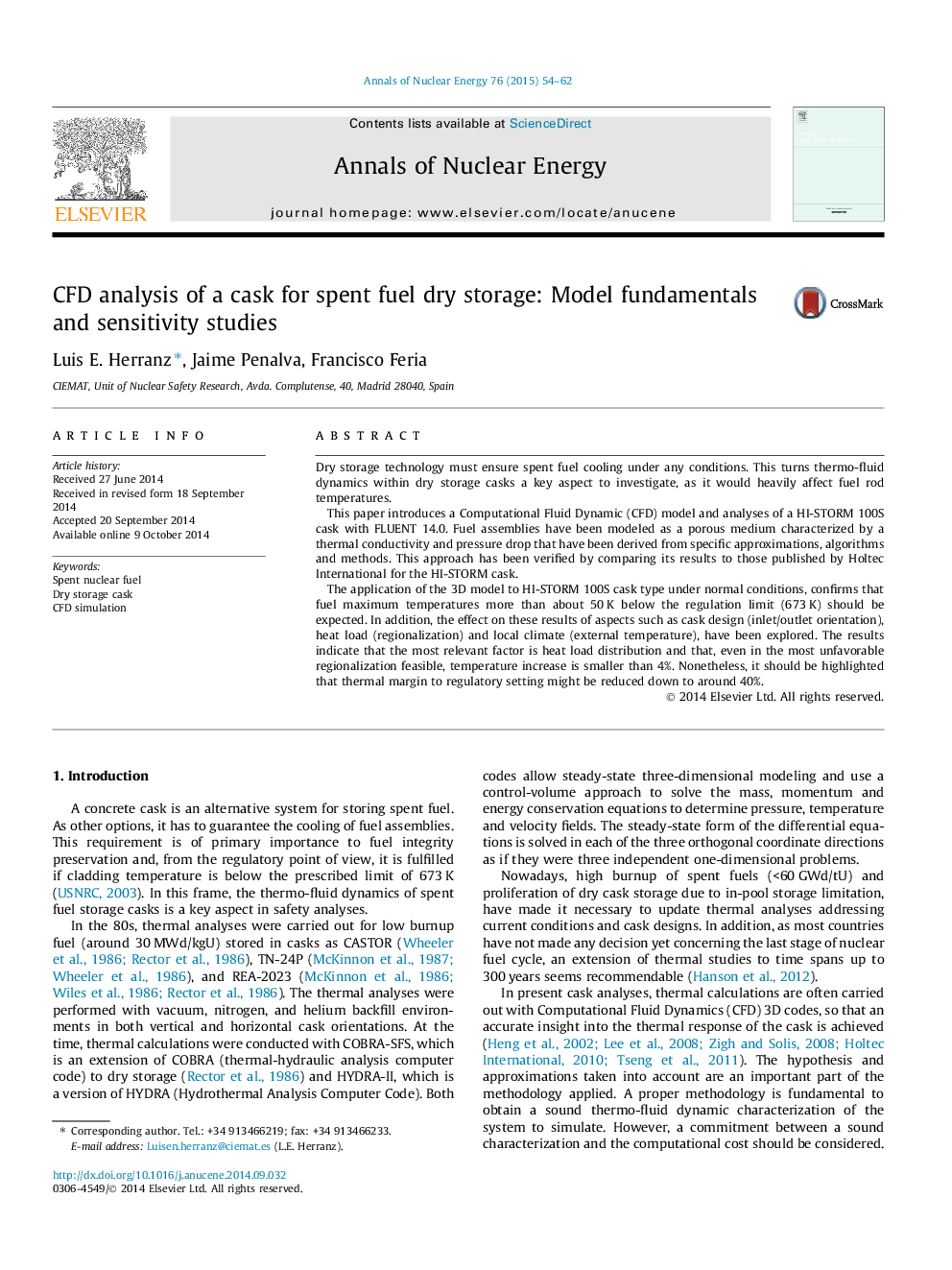| کد مقاله | کد نشریه | سال انتشار | مقاله انگلیسی | نسخه تمام متن |
|---|---|---|---|---|
| 1728172 | 1521122 | 2015 | 9 صفحه PDF | دانلود رایگان |

• A dry storage cask has been evaluated by a CFD code, FLUENT 14.
• An alternative methodology for thermal-fluid dynamic modeling has been performed.
• Fuel maximum temperature obtained is around 50 K below the regulation limit (673 K).
• Even in the most unfavorable heat load distribution temperature increase is smaller than 4%.
Dry storage technology must ensure spent fuel cooling under any conditions. This turns thermo-fluid dynamics within dry storage casks a key aspect to investigate, as it would heavily affect fuel rod temperatures.This paper introduces a Computational Fluid Dynamic (CFD) model and analyses of a HI-STORM 100S cask with FLUENT 14.0. Fuel assemblies have been modeled as a porous medium characterized by a thermal conductivity and pressure drop that have been derived from specific approximations, algorithms and methods. This approach has been verified by comparing its results to those published by Holtec International for the HI-STORM cask.The application of the 3D model to HI-STORM 100S cask type under normal conditions, confirms that fuel maximum temperatures more than about 50 K below the regulation limit (673 K) should be expected. In addition, the effect on these results of aspects such as cask design (inlet/outlet orientation), heat load (regionalization) and local climate (external temperature), have been explored. The results indicate that the most relevant factor is heat load distribution and that, even in the most unfavorable regionalization feasible, temperature increase is smaller than 4%. Nonetheless, it should be highlighted that thermal margin to regulatory setting might be reduced down to around 40%.
Journal: Annals of Nuclear Energy - Volume 76, February 2015, Pages 54–62